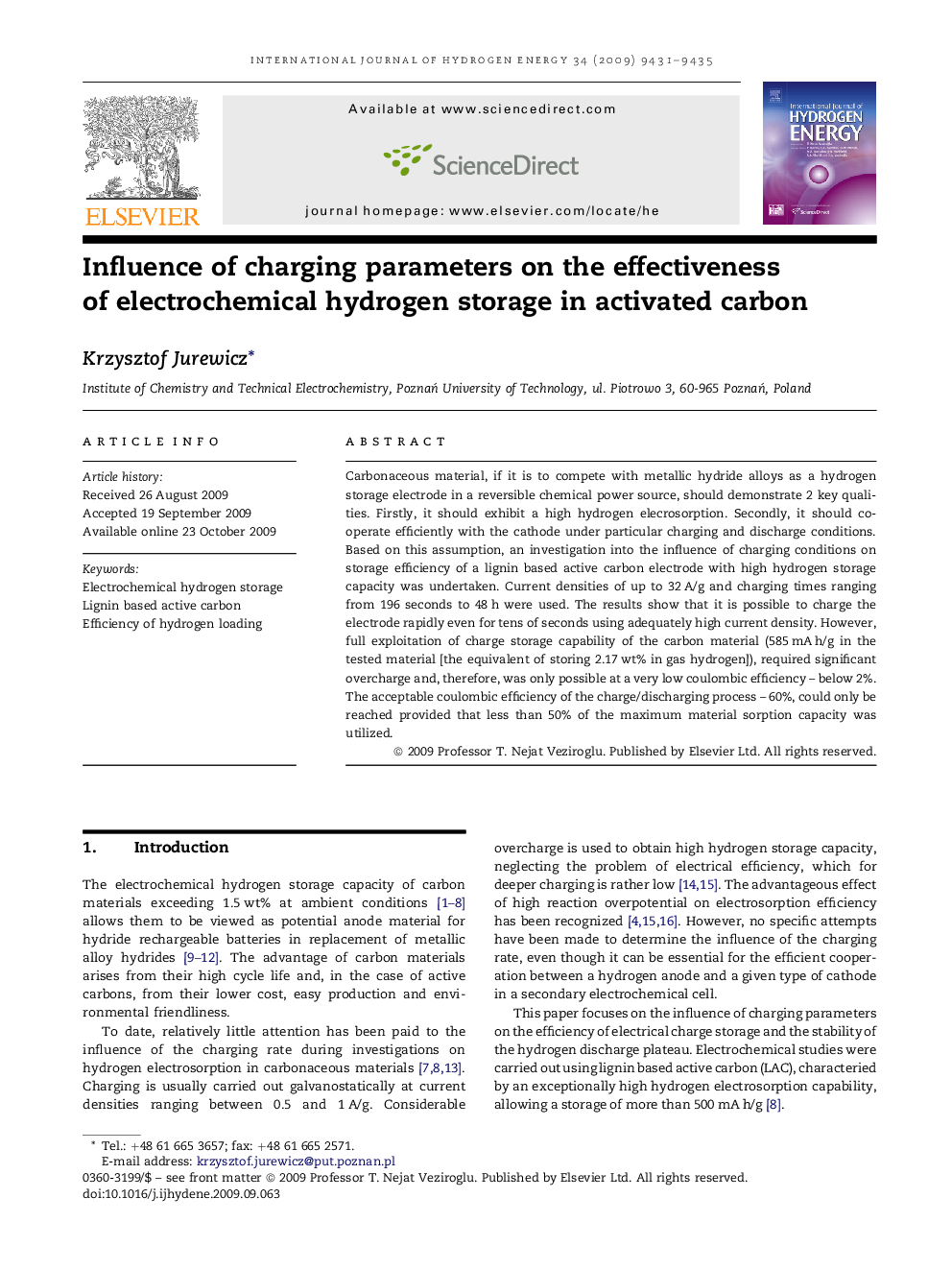| Article ID | Journal | Published Year | Pages | File Type |
|---|---|---|---|---|
| 1277236 | International Journal of Hydrogen Energy | 2009 | 5 Pages |
Carbonaceous material, if it is to compete with metallic hydride alloys as a hydrogen storage electrode in a reversible chemical power source, should demonstrate 2 key qualities. Firstly, it should exhibit a high hydrogen elecrosorption. Secondly, it should co-operate efficiently with the cathode under particular charging and discharge conditions. Based on this assumption, an investigation into the influence of charging conditions on storage efficiency of a lignin based active carbon electrode with high hydrogen storage capacity was undertaken. Current densities of up to 32 A/g and charging times ranging from 196 seconds to 48 h were used. The results show that it is possible to charge the electrode rapidly even for tens of seconds using adequately high current density. However, full exploitation of charge storage capability of the carbon material (585 mA h/g in the tested material [the equivalent of storing 2.17 wt% in gas hydrogen]), required significant overcharge and, therefore, was only possible at a very low coulombic efficiency – below 2%. The acceptable coulombic efficiency of the charge/discharging process – 60%, could only be reached provided that less than 50% of the maximum material sorption capacity was utilized.
